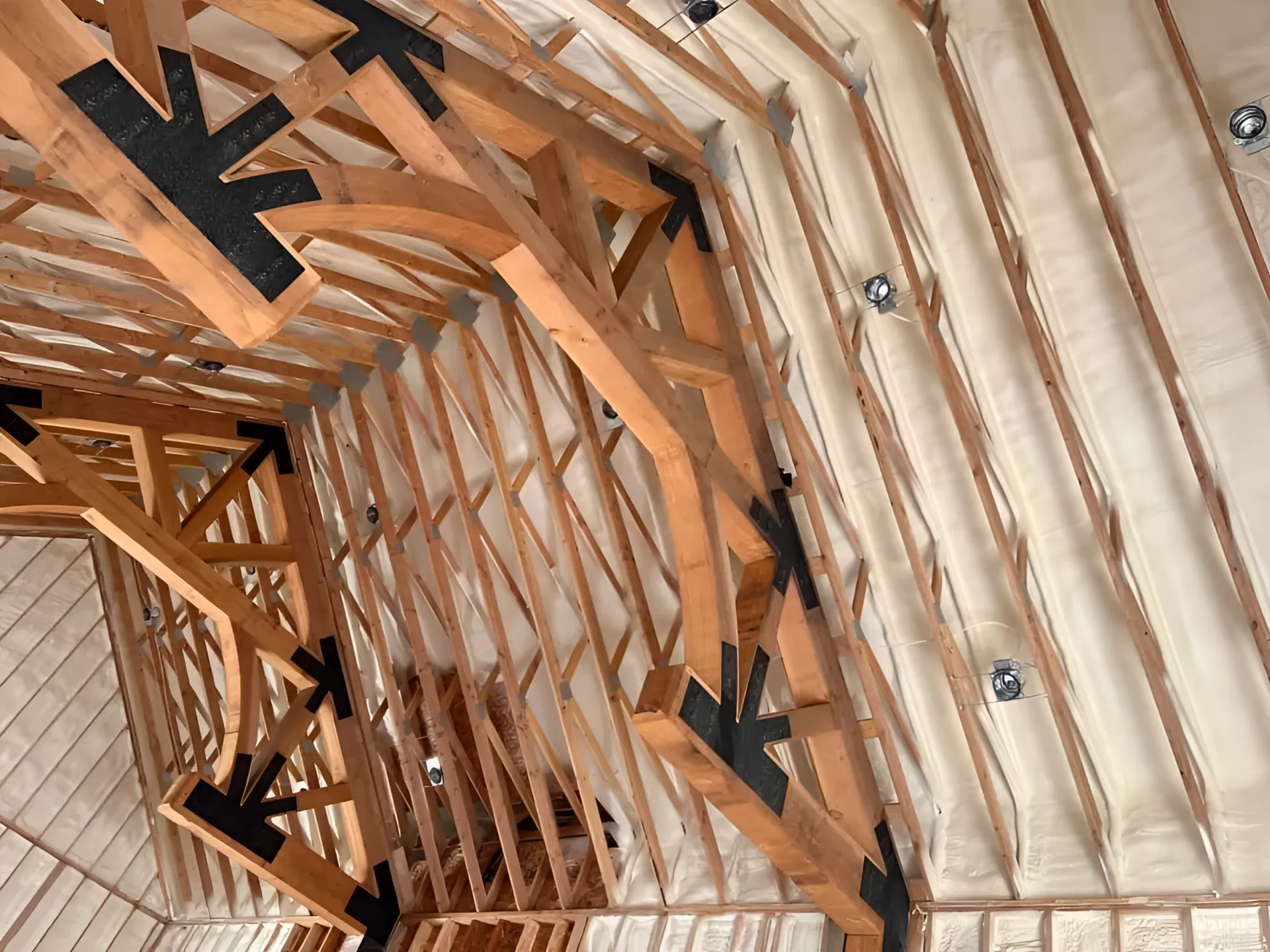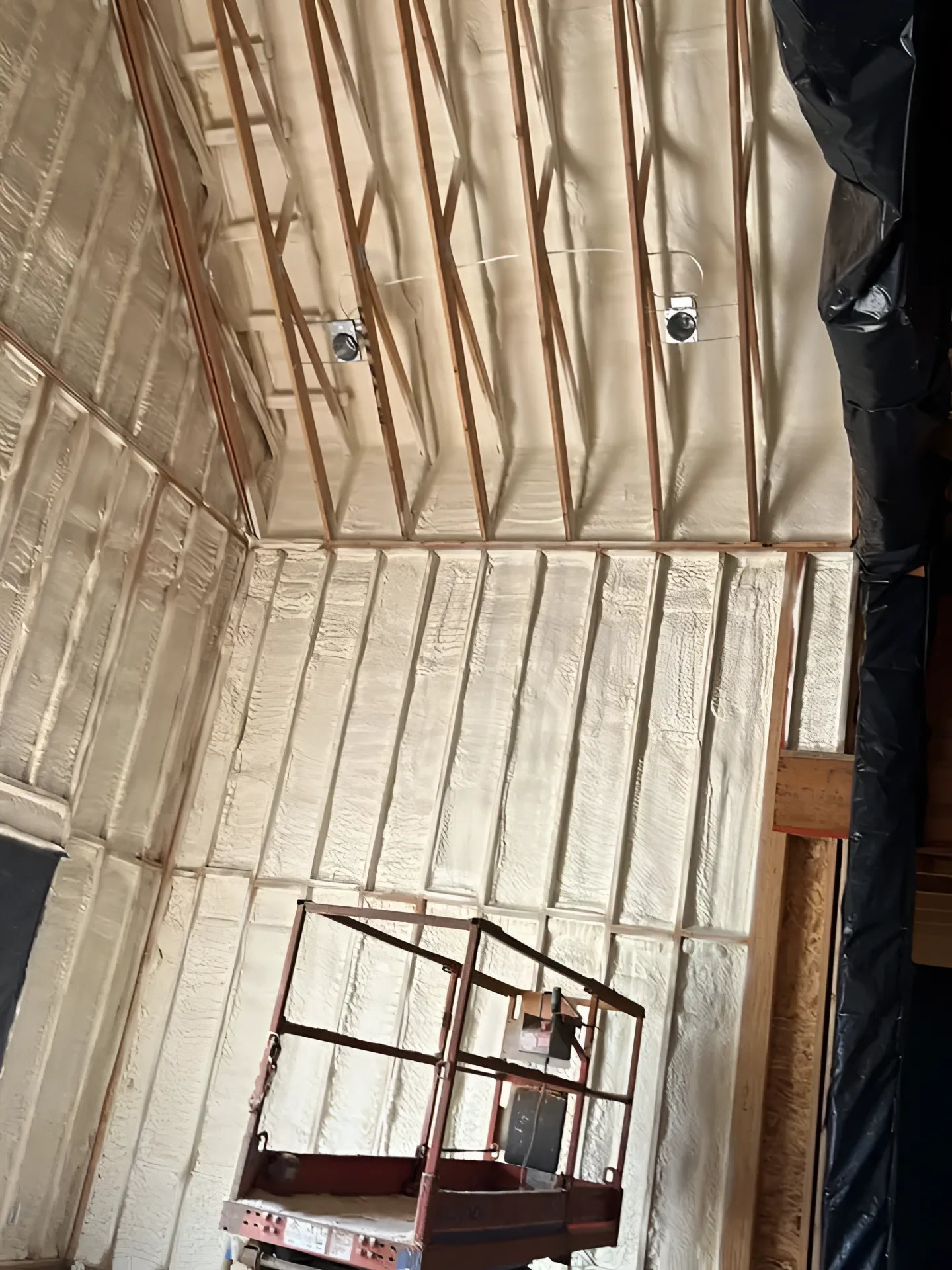Spray foam insulation is often a smart choice for homes and commercial structures in Mountain Home. The region’s wide temperature fluctuations, dry climate, and frequent high winds create energy inefficiencies that open-cell and closed-cell spray foam can mitigate. Compared to traditional insulation methods like fiberglass or cellulose, spray foam provides a stronger air seal and better moisture resistance.
For structures exposed to seasonal extremes, spray foam can maintain more consistent indoor temperatures, reduce HVAC strain, and prevent moisture infiltration. Based on field performance across Mountain Home properties, spray foam’s long-term durability and resistance to air leakage make it a reliable option in both new construction and retrofit projects.
The insights provided here are based on direct application experience across residential, agricultural, and commercial structures in Mountain Home and surrounding areas.
How Spray Foam Performs in Mountain Home Conditions
Spray foam’s value becomes clear when examined through the lens of local weather demands. Here’s how it compares:
Comparative Performance Across Insulation Types in Mountain Home
| Insulation Type | R-Value per Inch | Air Sealing | Moisture Resistance | Performance in High Wind | Longevity (Years) |
|---|---|---|---|---|---|
| Open-Cell Spray Foam | 3.5 – 3.8 | Good | Moderate | Fair | 20 – 30 |
| Closed-Cell Spray Foam | 6.0 – 7.0 | Excellent | High | Excellent | 30 – 50 |
| Fiberglass Batt | 2.9 – 3.8 | Poor | Low | Poor | 10 – 25 |
| Cellulose (Blown-in) | 3.2 – 3.8 | Moderate | Low | Poor | 15 – 30 |
Bonus Tip: Closed-cell spray foam works as a vapor barrier and insulation layer, which can eliminate the need for separate materials in roof and wall assemblies.
Technical Characteristics to Know
Understanding key metrics helps with product selection and installation planning:
| Property | Open-Cell Foam | Closed-Cell Foam |
|---|---|---|
| R-Value per Inch | 3.5 – 3.8 | 6.0 – 7.0 |
| Expansion Rate | 100:1 | 30:1 |
| Permeability (perms @ 1″) | 10 – 16 | <1 |
| Density | ~0.5 lb/ft³ | ~2 lb/ft³ |
| Water Absorption | Moderate | Low |
| Typical Use Areas | Interior walls, attics | Roof decks, exterior walls |

Real Market Data Supports Its Use
- U.S. Department of Energy notes buildings lose 25-40% of heating and cooling energy due to air leakage. Spray foam insulation directly addresses this inefficiency.
- 2023 IBHS Research Center data shows closed-cell spray foam in roof assemblies improves wind uplift resistance by over 200% compared to batt insulation.
- DOE Climate Zones Guide classifies Mountain Home as Zone 5B (dry, cold winters), where high R-value and air sealing significantly improve envelope performance.
Bonus Tip: In older homes, closed-cell foam adds structural rigidity and can reduce racking during seasonal freeze-thaw cycles common in Elmore County.
Things to Evaluate Before Choosing Spray Foam
Before committing to spray foam insulation, it helps to clarify a few conditions:
- Building Age and Framing Gaps: Older buildings may require air sealing prep before spray foam can perform optimally.
- Ventilation Requirements: Spray foam creates a tighter seal, which may require adjusted mechanical ventilation systems.
- Moisture Sources: Homes with crawlspaces or known vapor drive may benefit more from closed-cell applications.
- Access Points: Difficult-to-reach areas like enclosed cavities might increase installation time.
Bonus Tip: Roof insulation with spray foam should be paired with vapor control strategies to avoid condensation issues under Mountain Home’s high solar gain.
Common Questions from Property Owners
Which areas of the building should be insulated first?
Prioritize the attic and roof deck. These areas lose the most conditioned air and gain the most heat in summer.
Can existing insulation be left in place?
In some cases, yes. However, full performance is achieved when old materials are removed and foam is applied directly to framing and sheathing.
Is spray foam safe in homes with kids or pets?
Once cured (usually within 24 hours), spray foam is inert and safe. Professional installers should follow proper ventilation protocols during application.
How long does installation usually take?
Most residential projects take 1-2 days, depending on access and square footage.
Most Relevant Services Offered by Valley Spray Works
- Open-Cell Spray Foam: Recommended for interior wall cavities and attics with less exposure to moisture.
- Closed-Cell Spray Foam: Best for roofs, crawlspaces, and exterior walls requiring higher R-value and water resistance.
- Spray Foam Roof Insulation: Reduces thermal bridging and improves the energy efficiency of exposed roof decks.
- Intumescent Coatings: Applied over spray foam in attics and garages to meet fire code requirements.
Final Evaluation for Mountain Home Property Owners
Spray foam insulation is a viable and high-performance solution for structures in Mountain Home. It delivers lasting energy efficiency, indoor comfort, and structural benefits that match the region’s climate conditions. Choosing between open-cell and closed-cell options depends on the area’s moisture load, access, and intended thermal performance.
Review current air leakage, attic conditions, and envelope gaps to determine suitability. Long-term benefits depend on proper installation and site-specific preparation.
Contact Valley Spray Works for Expert Help
For structures in Mountain Home facing air loss, inconsistent temperatures, or weather exposure, spray foam insulation addresses these problems effectively. Valley Spray Works applies both open- and closed-cell spray foam for residential and commercial needs. Reach out to [email protected] or call (208) 539-5281 to discuss your building’s conditions and explore insulation options with trained applicators.
Long-Term Questions Answered
How often should spray foam insulation be inspected?
A visual inspection every 3-5 years helps monitor adhesion, moisture issues, and potential damage from pests or renovations.
Can it be repaired if damaged?
Yes. Small sections can be patched with new foam. Large damage areas may need full removal and reapplication.
Will it degrade over time?
Closed-cell foam maintains performance for 30+ years. UV exposure should be avoided to prevent surface breakdown in open areas.
Can it be painted or coated?
Yes. Intumescent paints and other compatible coatings can be applied to meet building codes or improve aesthetics.
Does it help with noise reduction?
Open-cell foam offers moderate sound dampening, especially in shared walls and media rooms.



